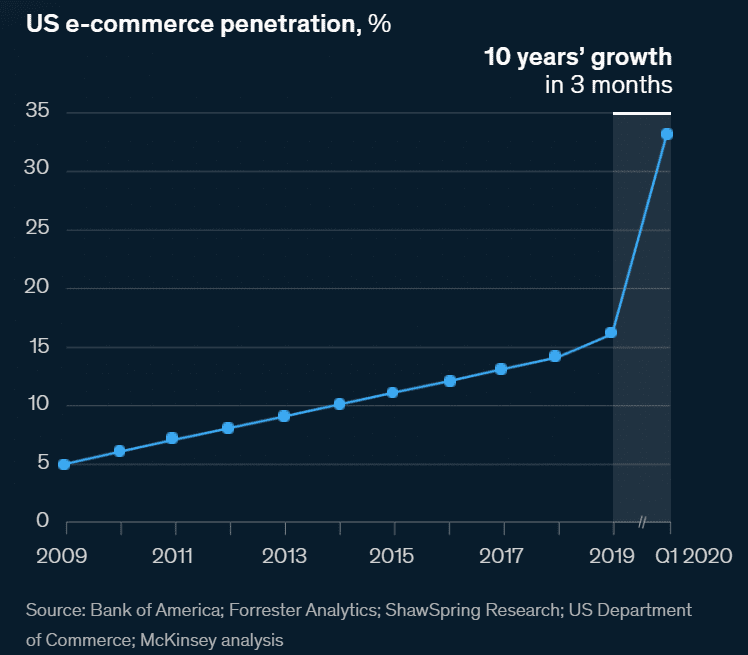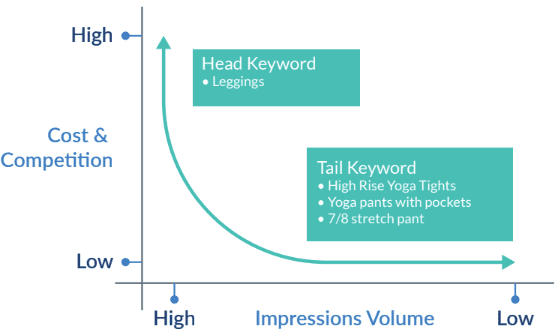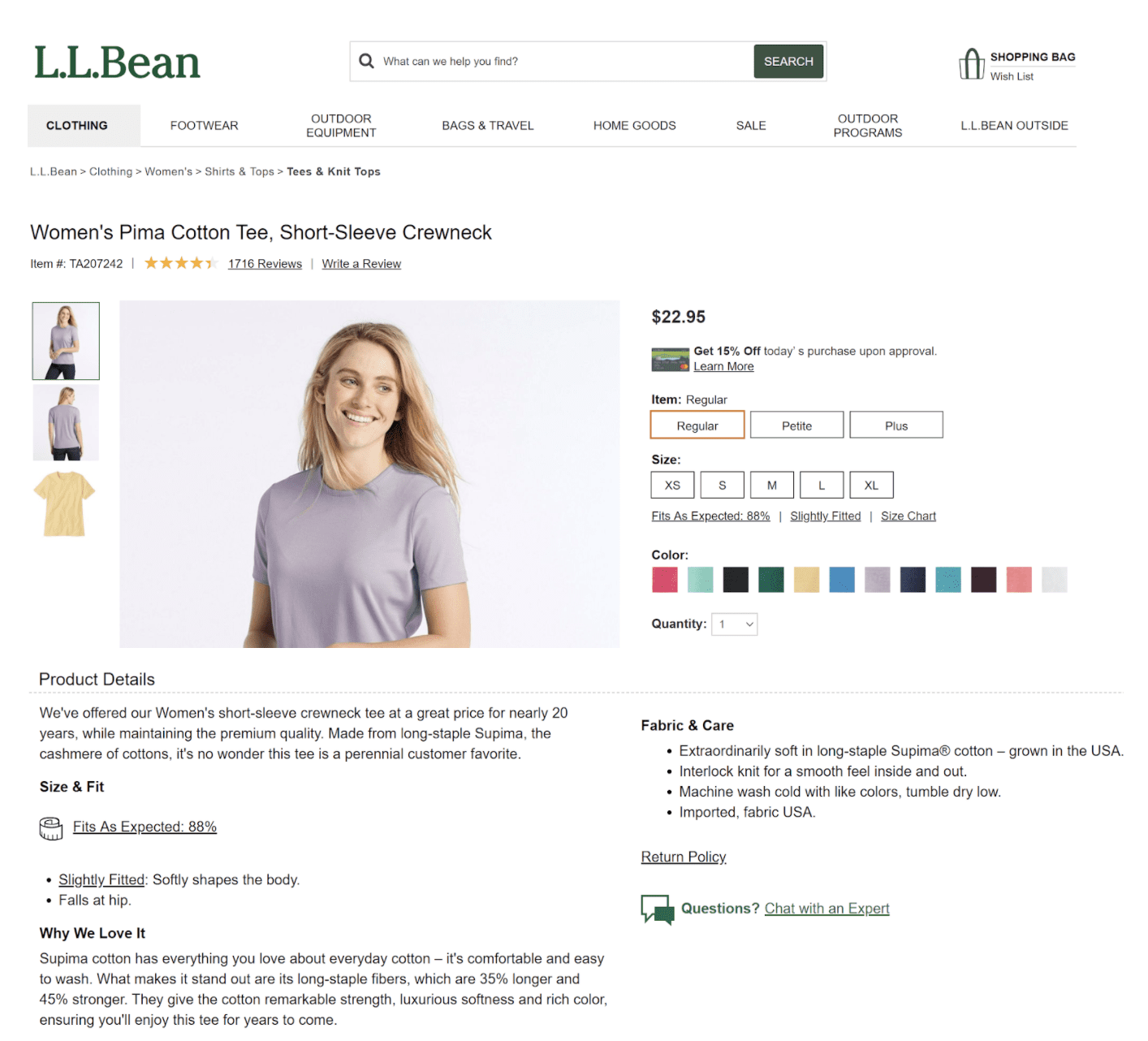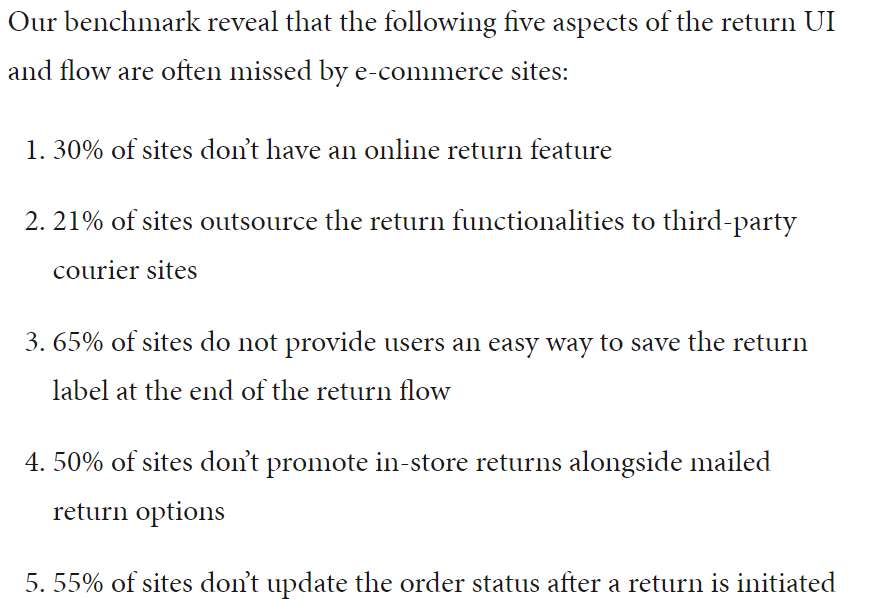Top 7 Ecommerce Strategies for Apparel Companies in 2021
Here’s a strategic checklist for clothing companies navigating year two of the pandemic.

Last year the pandemic created a whole new breed of shoppers that have a newfound level of comfort with online shopping. Gartner reported that COVID-19 has accelerated permanent changes in e-commerce consumer behavior. Consider what this means as everything starts opening up again. I’d predict shoppers are still going to be buying from you online. The first half of 2021 is critical when it comes to setting your business up to succeed. We’ve put together a list of the top 7 ecommerce strategies for apparel companies as we continue in this new dawn of shopping and look ahead to a holiday season that will pick up where the last holiday left off.

The pandemic has driven a major shift in shopping behavior. Many of these new shoppers will transition to using online shopping as their primary channel, opening the doors for brands to earn their business.
1. Optimize Your SEM Strategy
Competition will be high as brands are fighting to capture the attention of highly qualified traffic. This means that your SEM (search engine marketing) strategy will need to get tuned up. But this does NOT mean that your budget needs to go up!
One creative strategy is to take the “Moneyball” approach to SEM. You don’t need to go buy out all the heavy hitter keywords. These are going to cost a pretty penny and not drive the qualified traffic you’re looking for. Instead, look for more specific keywords that are relevant to the specific assortments in your catalog. If you capitalize on a list of these you’ll surely drive more qualified traffic at a fraction of the cost.

Want to take this to the next level? Plug in Lucidwork’s Fusion to the feedback loop. Fusion will incorporate your shopper’s user behavior, or signals, and plug that back into the equation to recommend high performing ad word suggestions.

The typical SEM strategy approach, including ad and keyword buys.
2. Personalize Every Session
Welcome your shoppers into a store personalized to their preferences. Oh, hi Rebecca, welcome back, why don’t you check out these size 7 sneaks, they’ll coordinate great with the leggings you picked up last week. (Cue add to cart).
Personalization is the most powerful tool in building the in-store shopping experience online. Every apparel site needs to focus on personalization as the likelihood of physical retail experiences during the holidays are very uncertain.
Strong and effective personalization is at the intersection of customer profiles and in-session signals. When you marry these two data sources on-the-fly, shoppers feel like they have a personal shopping assistant helping them find what they’re looking for. Whether it’s through recommendations which compliment past purchases or results sorted in a way that put fit, color, or style preference at the top, personalization will increase both conversion and average order value (AOV). Read about how KÜHL – a leader in high-performance outdoor apparel – successfully achieved these goals with ML-powered personalization.
And you can’t argue with the results. For example, one of our customers, a leading off-price department store chain, was able to increase conversions from 4% to 7.6% after deploying Fusion to provide a hyper-personalized experience. By leveraging Fusion’s NLP (natural language processing) capabilities, signals (collecting, processing, storage), and content/user analytics, retailers can create that special “you-know-me” experience.
3. Get the Right Fit
There are endless questions and curiosities around sizing, especially when it comes to gifting, and even more so now that dressing rooms have been canceled for the foreseeable future. How does this brand’s sizing run? How do they measure waist and inseam?
If you’re selling your own line of apparel you should be able to provide shoppers with highly detailed sizing charts. If you’re selling multiple brands on your site, it’s critical to reach out to those vendors to get all of their sizing charts. Make links to these highly visible on every product detail page (PDP).
Encourage feedback and reviews of the fit from customers who have purchased the garment in the past. This will help shoppers understand, generally, how true to fit the garment is. While collecting information from previous customers have them submit photos. This content will add great value to the shopping experience. L.L. Bean does an excellent job of collecting and conveying this information to the shopper.

Lastly, if you have information about the model in the photo, add that to the PDP as well. This will give the shopper insight to how the garment will lay over certain portions of the body.
4. Diversify Payment Options
The more options, the more information, the better—this is true for product info as much as it is for payment options. Another way to boost conversions is providing third-party payment options. 2020 saw an explosion of alternative payment providers According to a joint report between Baymard and Amazon Payments, 83% of the top 60 grossing commerce sites across the US and internationally offer third party payment options.
They also found that nearly 10% of shoppers abandon carts solely due to the lack of payment options. Whether it’s Venmo, Paypal, Klarna, or some other option this is a huge value add.
Additionally, as we prepare for the holiday season, consider offering different payment plans or financing. The pandemic has impacted many shoppers’ primary source of income. This would help you level the playing field with your competition and secure many more sales.
5. Solve Null Results with Semantic Vector Search
In this day and age, we should not be showing zero results as an option anymore. Full stop. We have the advanced technology to create a better experience for our customers by mapping a data infrastructure that aligns our product catalog to popular queries and even items we want to surface for specific campaigns and stock pushes.
This is where semantic vector search comes in. We’ll let the Lucidworks data science experts explain exactly what this is from a technical perspective, but for the layman, it’s essentially a method of connecting similar products with one another in order to surface items in a product catalog that will have a high rate of conversion when attached to certain search queries. When your search engine comes back with nothing, semantic vector search goes out and finds the products that meet your customer’s goals.
Maybe a fitness guru is looking for a specific pair of yoga pants that was discontinued because a newer version was created with better fabric and fit. Instead of showing a zero results page when our yogi searches their beloved leggings, they’ll see the new version of the pants with all the matching tops and accessories that go with it. Maybe they’ll even see some branded content that explains why the fitness brand has moved to more sustainable fabric options with better moisture wicking. A home run for our yogi and a much better shopping experience overall.
Lucidworks recently deployed our own version of semantic vector search, Never Null, for one of our big box retailer customers and decreased their zero search results by 90% over the Black Friday weekend. That one methodology alone increased their revenue by millions of dollars during one of the most pivotal times of the year. Check out the full case study here.
6. Double Down on Self-Service
Gone are the days of waiting on hold for 30+ minutes to speak to a customer service associate. At the end of the day, the primary goal is to provide shoppers with the right information at the right time so there is no need to reach out for additional support. Whether it’s returns, product questions, or order tracking, you need quick and easy answers for your shoppers.
One of the most valuable and cross-experience improvements you can make in the rush to digitizing your workflows is to launch a smart chatbot solution. This will enable you to scale up your call centers virtually, without adding more human agents. You’d be amazed at the different kinds of questions chatbots can answer today, including facilitating returns, helping shoppers answer questions about products, and providing order tracking information.
Lucidworks has developed a chatbot enhancer which applies all of the machine learning and natural language processing inherent in Fusion (including natural language processing, machine learning, signals collecting) to the chatbot experience. Better self-service frees support and helpdesk agents to focus on the complex and valuable questions that matter for retaining customers and supporting employees.
Read more about Lucidworks Smart Answers here.
7. Overhaul Your Returns Process
Spaghetti is to meatballs as returns is to online shopping. Nearly 30% of apparel purchases are returned. This is my least favorite part of online shopping. Who do I call? I have to call someone? When will my credit arrive? Where do I find the status? For many reasons, this is a huge challenge today. As we drive more traffic online and prepare for holiday shopping, we need to give the returns process a serious overhaul.

Statistics from Baymard; There is a huge opportunity to edge out the competition with a thought-out and effective return process.
A couple of recommendations:
- Provide free returns
- Make processing simple by way of a link on your homepage, in a shipment confirmation email and order history
- Provide store credit in advance of actual credit
- And… advertise this!
Get the word out about how easy and fast and free returns are on your site. Shoppers will notice and confidently shop on your site this holiday season.
8. Utilize Google Merchant Center for Free Product Listings in Google Shopping
The Google Merchant Center is a platform for retailers to upload a product feed in Google Shopping Ads and Free Listings. Free listings debuted in April 2020 and have been a welcoming “free” traffic source for many online retailers.
JCT Growth worked with Premium Pony Parts – a Mustang auto parts dealer – in April 2021 to set up their merchant center account for the first time. By submitting their product feed and appending each URL with UTM parameters “?utm_medium=google&utm_source=google-shopping”, they delivered a 10% lift in traffic due to free organic shopping. Websites could see organic shopping being anywhere from 3-10% of their total organic traffic, depending on the types of content driving traffic.
No matter the size and scope of a website, setting up a feed doesn’t have to be complicated. Google lets you create a google sheet version that allows even the smallest or least tech-savvy retailers to enter the market and broaden their market.
In addition to the increase in traffic attributed to the free shopping campaign, JCT Growth noticed an increase in indexed pages (AKA web pages added to Google Search’s index) for the client due to the increase in Google crawling (AKA Google’s increased ability to find our client’s webpages), fueling additional organic growth.

Stay Creative
2021 is going to be a critical year for the apparel industry. Many brands struggled last year due to the pandemic. Consider implementing some (or all!) of these creative ecommerce strategies to ensure you edge out the competition and position your brand for success.
Interested in more tips to improve your ecommerce site? Check out this article: What You Need to Implement Contactless Retail.
Best of the Month. Straight to Your Inbox!
Dive into the best content with our monthly Roundup Newsletter!
Each month, we handpick the top stories, insights, and updates to keep you in the know.